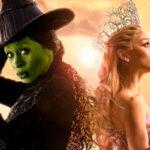

“Friday the 13th,” released in 1980, swiftly became an icon of the horror genre, captivating audiences with its blend of suspense, violence, and sinister intrigue. Under the direction of Sean S. Cunningham, the film launched a enduring franchise that made an indelible mark on horror cinema. However, behind the mask of Jason Voorhees and the bloody events of Camp Crystal Lake, lie a series of fascinating curiosities surrounding the production of this terror classic. Delving into these details adds an extra layer of fascination to the legacy of “Friday the 13th,” unveiling the secrets behind the creation of one of the most iconic films of the genre.
1 – HOW DID THE IDEA OF “FRIDAY THE 13TH” COME ABOUT?
Several elements played pivotal roles in the conception of “Friday the 13th.” Sean S. Cunningham, still recovering from the impact of his previous films, “Here Come the Tigers” and “Manny’s Orphans,” which were unsuccessful, envisioned a return to the horror genre following the success of his production in “Last House on the Left” (1972), directed by Wes Craven. The influence of “Halloween,” directed by John Carpenter and released in 1978, was also crucial. Cunningham, in dialogue with Craven, explored the possibilities of a new project, although it was exclusively his initiative, valuing Craven’s invaluable advice, his close friend.
After discussions with Craven, Cunningham brought Victor Miller on board to collaborate. He instructed Miller to study Carpenter’s “Halloween,” serving as inspiration. Thus, “Friday the 13th” began to take shape between 1978 and 1979, initially known as “A Long Night at Camp Blood,” until Miller had an epiphany for the official title.
The distinctive logo of “Friday the 13th,” with its three-dimensional representation and shards of glass, was conceived from a photograph by Richard Illy, based on ideas from Cunningham and his friend Michael Morris, then director of an advertising agency. With the material ready, Cunningham boldly sent one of the posters to Variety magazine, announcing the film for November 1979, although production was still in its early stages, without a definitive script and constant adjustments during filming. Cunningham sought to draw attention to the project, a strategy that paid off, attracting key members of the team despite the lack of concrete financial proposals.
Furthermore, the promotion of the logo also aimed to ensure that the title was associated with his film, after rumors that another director was interested in using “Friday the 13th” for his own production, which eventually was released as “The Orphan” in 1979.
2 – RECORDINGS AND CASTING CHOICES
Camp Crystal Lake, in reality, is a genuine location. It’s a small campground called No-Be-Bo-Sco, located in New Jersey. The production team didn’t need to make significant modifications to the site, just a few adjustments, such as installing additional bathrooms. To this day, the camp still stands and preserves some of the furniture and items used during filming, as a tribute to the film’s glorious past. While the recordings were underway, most of the crew stayed in hotels, but some members, like Tom Savini and Taso N. Stavrakis, chose to stay at the camp.
This was Cunningham’s first collaboration with a casting agency, and it was also TNI’s first foray into the horror film genre. For Cunningham, all the actors could be unknowns, except for the role of Pamela Voorhees. The selection for the role of Alice was the most time-consuming. Among the young actors who participated in “Friday the 13th,” Kevin Bacon stood out as having the most notable career after the film.
3 – THE ICONIC SOUNDTRACK
When we reflect on “Friday the 13th,” one of the emblematic elements that comes to mind is the unique soundtrack, marked by the nearly incomprehensible words “ki-ki-ki-ma-ma-ma,” which actually derive from the phrase “kill her, mommy,” uttered by Pamela Voorhees almost at the end of the film.
The responsibility for composing the soundtrack fell to Harry Manfredini, who was relatively new to the world of horror cinema. When he had the opportunity to watch a screening of “Friday the 13th,” the film was already nearly finished. One of the producers requested that he intensify the scary aspect of the film, to which Manfredini responded that, in his perception, the film was already terrifying enough.
Undoubtedly, however, Manfredini’s soundtrack, with its distinctive “ki-ki-ki-ma-ma-ma,” added a special touch that further elevated the atmosphere of the film.
4 – FILM CRITICS SLAMMED THE MOVIE AT THE TIME
Film critics have never been particularly kind to horror movies. Over the years, we’ve heard stories of film critics who criticized certain productions so harshly that these films ended up becoming almost iconic, following the maxim of “love me or hate me, but talk about me” – a strategy that guaranteed viewership among rebellious youth. However, some critics took their critiques to an extreme.
Critics like Gene Siskel demonstrated particular outrage after watching the first “Friday the 13th,” going so far as to be so offended by the existence of the film that he decided to publicly reveal the address of Betsy Palmer, the talented actress who portrayed Pamela Voorhees, to all his readers in the newspaper.
However, his attempt to discredit the film backfired. Despite believing that Palmer resided in his hometown of Connecticut, she was actually from a town in Indiana. According to David Grove’s book, Palmer revealed that she never received a single letter as a result of this exposure, and only learned of these attacks many years later.
5 – THE DIRECTOR WASN’T KEEN ON SEQUELS
In fact, originally, the film was intended to conclude with its own ending. Most of the crew saw no reason to extend the story with a sequel, nor to continue the saga with more subsequent movies. However, due to a set of circumstances — including the influence of Philip Scuderi, one of the film’s producers and a influential figure in Sean Cunningham’s life — a sequel ended up being produced. Steve Miner joined some key members of the “Friday the 13th” team and decided to move forward with the project.
Although Cunningham was involved on various levels in the sequels of “Friday the 13th,” not only because he was the creator of the original story, but also because his wife was the editor of the second film, he wasn’t particularly interested in the ongoing direction of the series. He also expressed concerns about the idea of Jason becoming the main focus of the narrative. However, everything ended up following Scuderi’s vision, who from the beginning recognized the huge commercial potential of the character Jason.
“Friday the 13th” from 1980 remains a landmark in the world of horror cinema, not only for its intriguing plot and memorable suspenseful moments, but also for the numerous curiosities and fascinating details surrounding its production. From the creation of the iconic character Jason Voorhees to the challenges faced by the crew during filming, the film has become more than just a piece of entertainment; it is an essential part of pop culture. By exploring the behind-the-scenes and the peculiarities behind this production, we are reminded of the lasting impact that “Friday the 13th” had on the horror genre and how it continues to intrigue and captivate audiences to this day.








